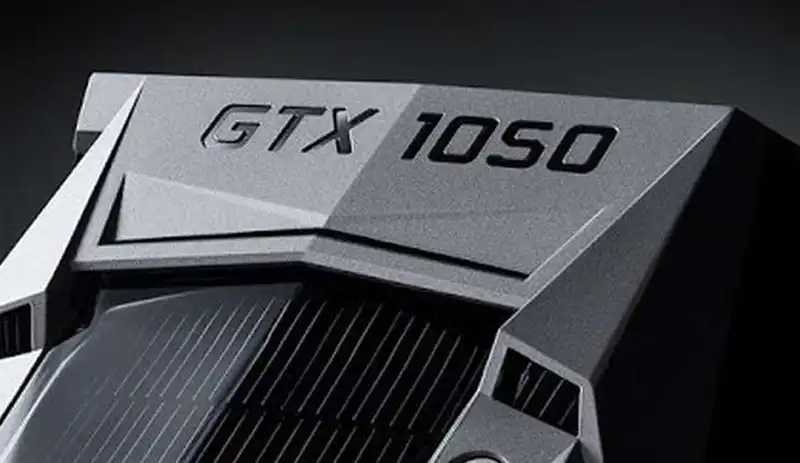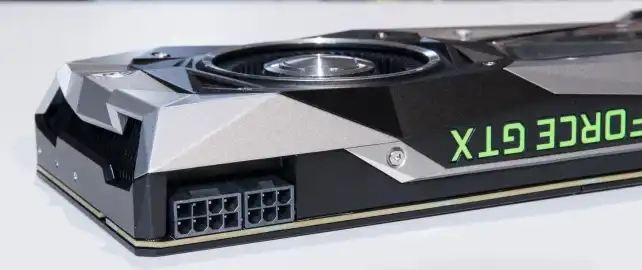You can also be interested in these:
- NVIDIA GeForce GT 720 review
- NVIDIA Quadro FX 3800 review
- Nvidia GeForce RTX 4090 full review
- Nvidia Geforce GTX 560 Full Review
The NVIDIA GeForce GTX 1050 Ti Max-Q has quite the reputation online for being one of the company’s better mobile GPU options. While it’s not the most powerful around, it strikes a nice balance between power consumption and performance. It’s become a much beloved favorite among the community for this very reason.

As most avid PC fans know, NVIDIA rarely ever delivers on every front like this. Most of their mobile GPUs tend to stifle themselves one way or another, so seeing them hit every possible goal like this is surprising. But, is the love for the NVIDIA GeForce GTX 1050 Ti Max-Q still warranted? It’s been a while since its launch after all, does it still command the same respect? Find out in our full review!
Specifications of the NVIDIA GeForce GTX 1050 Ti Max-Q
Originally launched in January 2018, The NVIDIA GeForce GTX 1050 Ti Max-Q was a mobile graphics chip by NVIDIA that brought about a slew of changes to the typical mobile GPU formula. Built on the 14 nm process, it’s based on NVIDIA’s GP107 graphics processor in its N17P-G1-A1 variant. This means that the GPU runs DirectX 12, and all modern games will run on it just fine.
Speaking of, the NVIDIA GP107 graphics processor is an average sized chip with a die area of 132 mm² and 3,300 million transistors. On the inside of it, you’ll find an impressive 768 shading units along with 48 texture mapping units, and 32 ROPs. NVIDIA has also delegated 4GB GDDR5 memory to the GPU, and it’s all connected using a standard 128-bit memory interface.
The NVIDIA GeForce GTX 1050 Ti Max-Q has its cores clocked at 1152 MHz by default, though this can be increase to up to 1291 MHz for a marginal performance boost. Its memory on the other hand runs at 1752 MHz, as well as having a power draw of 75 W maximum. There are no outputs for it, as it’s a mobile GPU designed for laptops.

Over on the inside, the NVIDIA GeForce GTX 1050 Ti Max-Q is connected to the rest of the system using a PCI-Express 3.0 x16 interface. Overall, it sports some fairly decent specs for a mobile GPU. As we said earlier, it strikes a good balance between performance and power draw. While it may be an end of life GPU, it’ll still perform admirably in any laptop it happens to be in.
Performance of the NVIDIA GeForce GTX 1050 Ti Max-Q
When it comes to performance, the NVIDIA GeForce GTX 1050 Ti Max-Q sits comfortably in the mid-range. While it does outperform many of its contemporaries in the mid-range price bracket, it also stays at relatively the same cost. Even now, it’s still a decent performer, though you may need to tone down quite a few of the settings on the latest triple A games.
For a direct comparison, the NVIDIA GeForce GTX 1050 Ti Max-Q outperforms GPUs like the AMD Radeon R9 M290X. It’s respectable performance, though when it comes to modern GPUs, it lags behind a bit. That’s not to say the performance is bad, but again, it’s mostly mid-range quality here. As long as you aren’t expecting incredible performance, the GTX 1050 Ti Max-Q does fine.
That is, of course, all dependent on the laptop’s cooling solution. The NVIDIA GeForce GTX 1050 Ti Max-Q is highly dependent on having better cooling to maintain its performance. Laptops with poor cooling will detract from the GPUs performance by around 15%. which is a significant drop in quality. Because of this, if you’re planning on buying an NVIDIA GeForce GTX 1050 Ti Max-Q laptop, do check reviews first.
NVIDIA GeForce GTX 1050 Ti Max-Q alternatives
While the NVIDIA GeForce GTX 1050 Ti Max-Q isn’t bad at all, it faces steep competition. From NVIDIA’s own branch, it needs to contend with the NVIDIA GeForce GTX 1650. As it stands, the NVIDIA GeForce GTX 1650 still maintains its spot as one of the best mid-range GPUs around. It can even somewhat keep up to other modern day GPUs, a testament to its powerful performance.
While the NVIDIA GeForce GTX 1050 Ti Max-Q is still good, there’s no denying that the GTX 1650 kind of invalidates it in most departments. Unless you really love a specific laptop running the NVIDIA GeForce GTX 1050 Ti Max-Q, we’d say it’s better to find a NVIDIA GeForce GTX1650 powered laptop instead. They’re just more powerful, for a tiny hike up in pricing.
Conclusion on the NVIDIA GeForce GTX 1050 Ti Max-Q
When it comes to mobile GPUs, The NVIDIA GeForce GTX 1050 Ti Max-Q is a solid pick. These days, NVIDIA GeForce GTX 1050 Ti Max-Q powered laptops are affordable and dime a dozen. You can take your pick of any one, granted you can find it somewhere on the market. It’s also important to note that it’s an end of life GPU, so while it can keep up, it’s not going to get any new updates.
Do keep in mind however that the NVIDIA GeForce GTX 1050 Ti Max-Q also isn’t going to be a powerhouse performer in any way. Even back when it launched, it was a mid-range GPU. It was never really capable of coming close to the performance of higher end GPUs, and nowadays it lags even further behind.
If you’re looking for a mobile GPU that can do some light gaming here and there without resulting in too much bulk added to the laptop, the NVIDIA GeForce GTX 1050 Ti Max-Q fits nicely. It doesn’t consume too much power, it’s not too demanding on battery life. But, it does need sufficient cooling, so that’s another thing to keep on your checklist.
On the other hand, if you’re a gamer on a budget, then you could do much better than the NVIDIA GeForce GTX 1050 Ti Max-Q. While it’s certainly a lot more affordable than before, there’s no denying that it’s simply not as powerful as modern GPUs. It’s built on older architectures and lacks in pure numbers next to modern graphics cards.
The NVIDIA GeForce GTX 1050 Ti Max-Q is an adequate GPU, and nothing more. It may have once been a celebrated product, but nowadays you’ll be hard pressed to find anyone still singing its praises. It’s still leagues ahead of just having integrated graphics though, and it’s by no means bad. If you find a good deal, it can still be a complete steal.
More stories like this
- NVIDIA GeForce GT 720 review
- NVIDIA Quadro FX 3800 review
- Nvidia GeForce RTX 4090 full review
- Nvidia Geforce GTX 560 Full Review
- All About the Ada Lovelace Architecture technology of the GeForce RTX 40 Series
- Nvidia RTX 3090 vs RTX 3090 Ti: The not-so-obvious conclusion